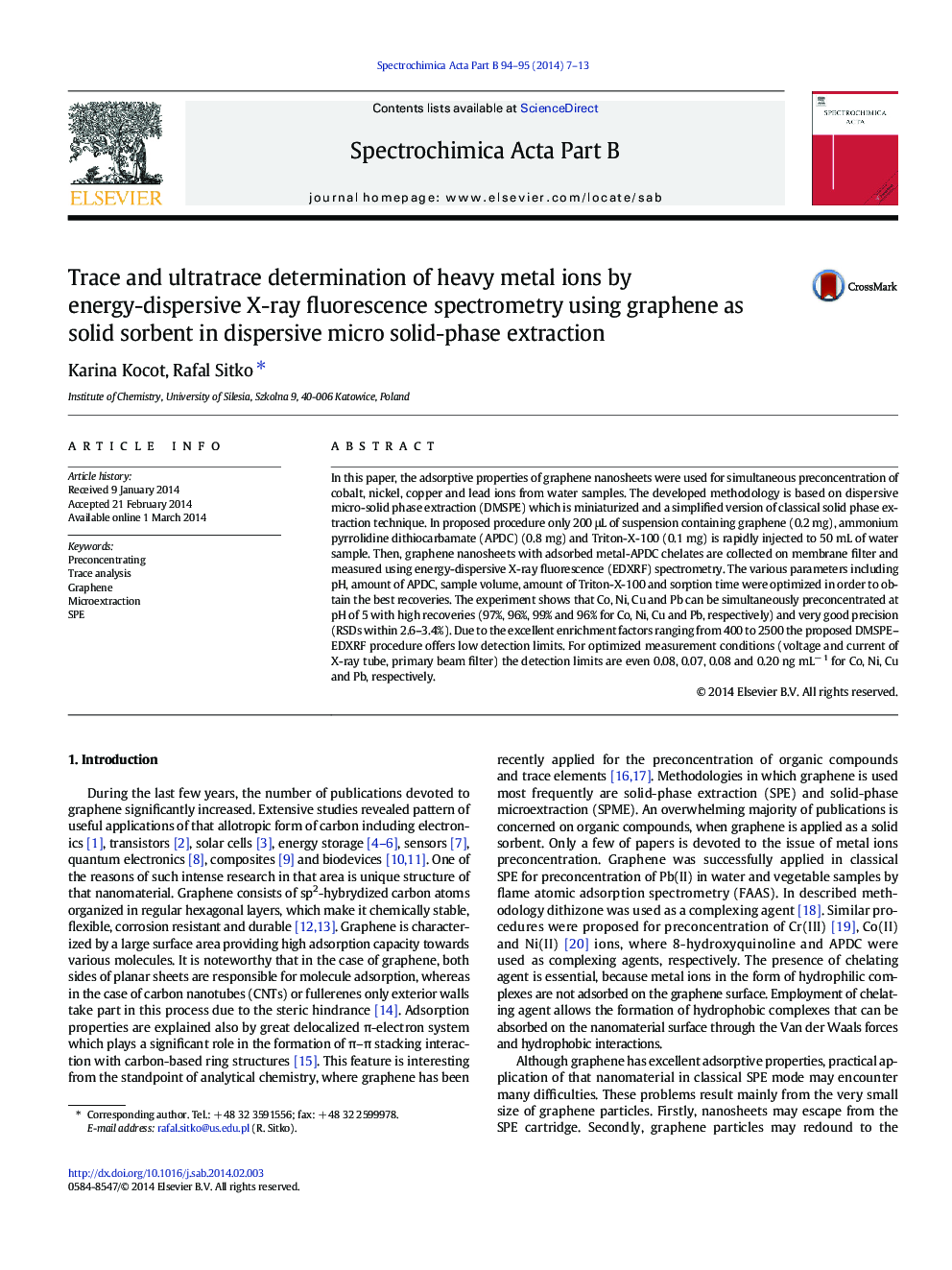| Article ID | Journal | Published Year | Pages | File Type |
|---|---|---|---|---|
| 1239686 | Spectrochimica Acta Part B: Atomic Spectroscopy | 2014 | 7 Pages |
•Excellent detection limits using EDXRF•A new preconcentration procedure combining DMSPE and EDXRF measurement•Graphene as a promising and efficient solid sorbent in DMSPE•Simple, fast, inexpensive and environmental friendly method
In this paper, the adsorptive properties of graphene nanosheets were used for simultaneous preconcentration of cobalt, nickel, copper and lead ions from water samples. The developed methodology is based on dispersive micro-solid phase extraction (DMSPE) which is miniaturized and a simplified version of classical solid phase extraction technique. In proposed procedure only 200 μL of suspension containing graphene (0.2 mg), ammonium pyrrolidine dithiocarbamate (APDC) (0.8 mg) and Triton-X-100 (0.1 mg) is rapidly injected to 50 mL of water sample. Then, graphene nanosheets with adsorbed metal-APDC chelates are collected on membrane filter and measured using energy-dispersive X-ray fluorescence (EDXRF) spectrometry. The various parameters including pH, amount of APDC, sample volume, amount of Triton-X-100 and sorption time were optimized in order to obtain the best recoveries. The experiment shows that Co, Ni, Cu and Pb can be simultaneously preconcentrated at pH of 5 with high recoveries (97%, 96%, 99% and 96% for Co, Ni, Cu and Pb, respectively) and very good precision (RSDs within 2.6–3.4%). Due to the excellent enrichment factors ranging from 400 to 2500 the proposed DMSPE–EDXRF procedure offers low detection limits. For optimized measurement conditions (voltage and current of X-ray tube, primary beam filter) the detection limits are even 0.08, 0.07, 0.08 and 0.20 ng mL− 1 for Co, Ni, Cu and Pb, respectively.
